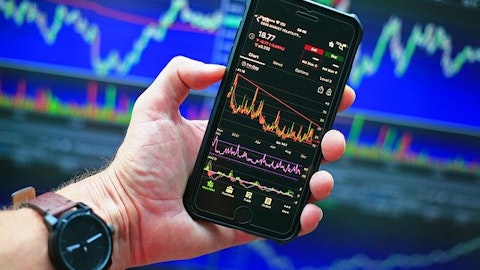Thomas Hassfurther: The answer to that is no, that does not accelerate when prices fall. In fact, it probably is the other way around. And our feedback from our customers is that they’re not — they haven’t been anticipating it and they’re not — they’re interested in being aligned long term. This is not a short-term play or anything like that. So we haven’t seen any uptick in bids or anything like that either.
Philip Ng: That’s really encouraging. And it’s great to see you guys take such a disciplined approach in terms of running your mills. Tom, I think you were talking about the macro, there’s a lot unknown right now. Let’s say — let’s assume it’s more of a soft-landing backdrop. There’s a decent amount of capacity coming on in the next 12 months. How do you kind of see that playing out for the industry? And then more importantly, how do you kind of see PCA position in navigating through that backdrop?
Thomas Hassfurther: Well, number one is the capacity adds that are coming on really have very little impact for us. And I think you have to look back historically and see what happened in the past when there’s been adds of capacity that have come on. I think about the Verso mill up in Jay, Maine when they converted a machine to virgin kraft. That did not succeed. That mill is not even open anymore. Midwest Paper was another one that had — it’s — as we’ve said a long, long time, the open market is very small in the U.S. And so those that add, they’re going to have to look outside the United States for the most part. This is a very, very integrated market, the open market that does exist is under long-term contracts, typically or certain relationships like we have with our outside market buyers.
So it’s — that has very little impact in my opinion. So when you hear us say we’re running to demand and demand is what it is. And just to produce additional board for the sake of producing it, is basically like a death wish and it doesn’t do you any good. So I hope that gives you a little flavor for where we’re coming from.
Operator: Our next question comes from Kyle White from Deutsche Bank.
Kyle White: I just wanted to go back to boxes at demand. And just wondering if you can give us a little bit more details on what you’re seeing by end market in that business. Any end markets that are really still working to the destocking and a bit weaker that we should really monitor here versus other end markets that have gone through this impact already?
Thomas Hassfurther: Well, the only thing I could say about some of these end markets, obviously, there anything anybody in durables got a big, big jump during those COVID years and they’ve come down dramatically. Consumers only need so much of some durable goods. And so that, therefore, that’s come down quite significantly. The other thing that has impacted us is in the ag business, Florida is an example with the 2 hurricanes. I mean, have wiped out some seasonal crops, the Pacific Northwest has had a lot of difficulty. You’ve got droughts in some other places. So the ag business took a pretty big hit this year, but that will definitely bounce back and that, and that should bounce back in pretty good shape. Other than that, across all of our segments and sectors, there’s all sorts of puts and takes and some are in better shape than others, and that’s just — that’s kind of the normal seasonal activity that takes place anyway.
Kyle White: Got it. And then you’re fairly active in share repurchases this past quarter. Can you just talk about your thought process there? And should we expect you to continue to be active throughout 2023, given your healthy balance sheet and maybe just how you weigh those decisions versus any potential acquisitions?
Mark Kowlzan: Again, we’ll be opportunistic as we’ve always been looking at these opportunities, whether it’s a great acquisition came along and it made sense to us. We have the ability and the flexibility to take advantage of that type of use of cash. Same thing with share repurchase and dividends will continue to be something we keep in front of us and look at how do we provide the best return for our shareholders and also at the same time, be in a position to take care of our customer needs. So again, as I said in my prepared comments, as we go forward, we’re in a great position to maintain the flexibility with our uses of cash and maintain a very strong balance sheet. And so none of that’s changed. It’s just part of our norm every day. Okay. I think we might have time for one more question, please.
Operator: Our final question today will come from Mark Weintraub from Seaport Research Partners.
Mark Weintraub: When he asked about the cadence of how price adjustments flow through the P&L. And I think you suggested that it was not faster on the way down than it is on the way up. So I guess that kind of begs the question. So of the $50 that has already been reflected by PPW, is a significant share of that anticipated to already be showing up in the box prices in the first quarter? Or is a meaningful portion of that yet to come in the second quarter if we were just to assume prices were in PPW flat from here?





